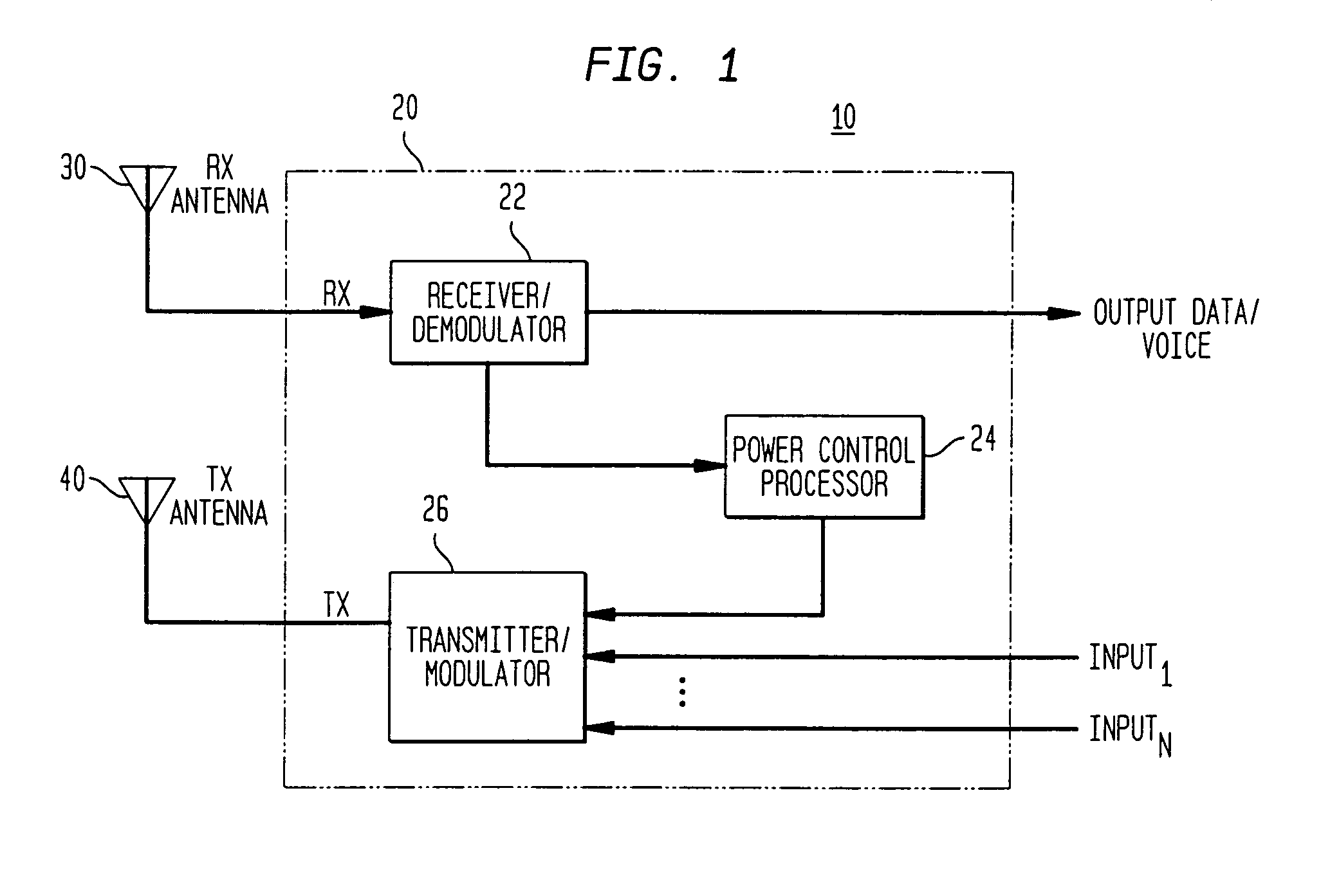Method and apparatus for controlling reverse link interference rise and power control instability in a wireless system
a reverse link and interference rise technology, applied in the field of wireless communications, can solve the problems of relatively few frame erasures, and achieve the effects of increasing interference conditions, reducing call quality, and reducing eb/no
- Summary
- Abstract
- Description
- Claims
- Application Information
AI Technical Summary
Benefits of technology
Problems solved by technology
Method used
Image
Examples
Embodiment Construction
[0016]The present invention is a system and a method for reverse link power control in a wireless communications network which constrains abrupt interference rises and power control instability by adopting a system-based, or centralized, power control algorithm when an increased interference condition is detected, such that call quality for an individual mobile(s) is allowed to degrade so that overall system quality can be maintained. In one embodiment, the present invention is a power control processor of a wireless network base station, such as a CDMA base station, which adopts a modified RILPC and / or a modified ROLPC algorithm upon detecting the increased interference condition. An illustrative embodiment of a reverse link power control system and method according to the present invention is described below.
[0017]Referring to FIG. 1, there is shown a general block diagram of a transmitter / receiver 20 of a base station 10 suitable for implementing embodiments of the present invent...
PUM
 Login to View More
Login to View More Abstract
Description
Claims
Application Information
 Login to View More
Login to View More - R&D
- Intellectual Property
- Life Sciences
- Materials
- Tech Scout
- Unparalleled Data Quality
- Higher Quality Content
- 60% Fewer Hallucinations
Browse by: Latest US Patents, China's latest patents, Technical Efficacy Thesaurus, Application Domain, Technology Topic, Popular Technical Reports.
© 2025 PatSnap. All rights reserved.Legal|Privacy policy|Modern Slavery Act Transparency Statement|Sitemap|About US| Contact US: help@patsnap.com



